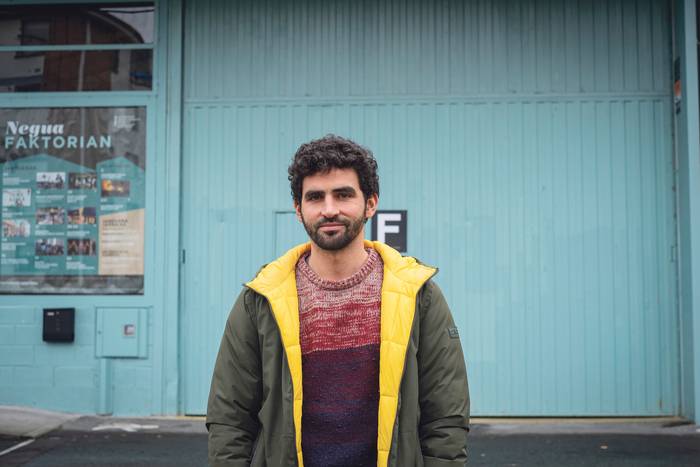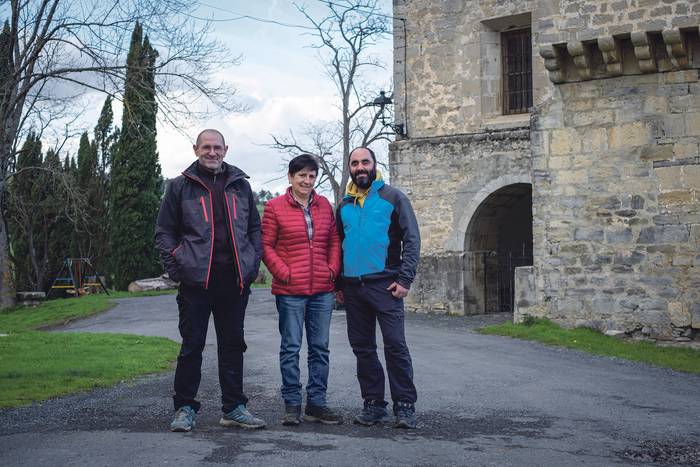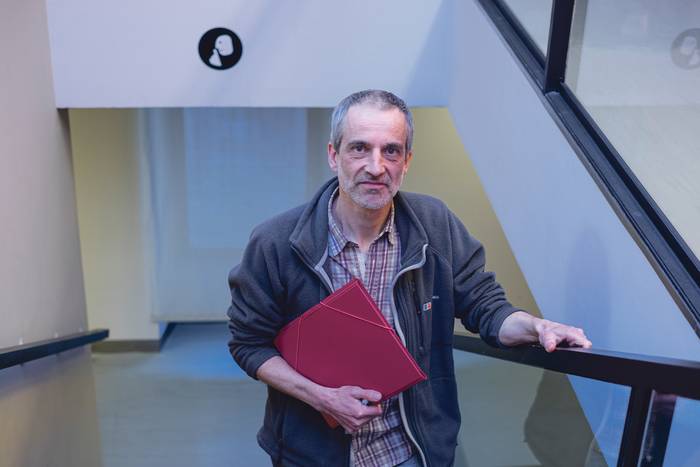Associative power in the community in Ayala
- The depletion of fossil fuels, the constant increase in prices… We are in an energy crisis. In this turbulent sea, energy communities are emerging in a dispersed way, focusing on renewable energies and sustainable models, with the aim of repressing the strength of union in the community. We know firsthand the experiences that flourish in Ayala.

The energy community is a word in the mouth of many at the doorstep of an energy crisis unknown so far. Here they are emerging as a small and effective alternative to the fossil fuel model, ever closer to the expiry date, claiming the need for a more sustainable model.
In Ayala there are also several steps taken in the last year for the creation of Energy Communities. The different groups of citizens are joining together to seek an answer to a common concern and gradually the model is spreading in our region. But what are the energy communities?
Energy communities
“Creating community is the central axis for tackling local energy challenges and making the leap to a more sustainable model”
“An energy community is a group of citizens who face energy challenges and acquire legal personality; be they associations, cooperatives…”, summarizes Koldo García Madariaga, a member of the founding group of the Goiener cooperative. Garcia works mainly as an office technician to advise and accompany on technical issues that may arise in different facilities. Koldo García has visited Faktoria in recent weeks, installing a photovoltaic facility that could be the seed of an energy community.
For García, an energy community is not limited to the installation of photovoltaic plates for self-consumption: “The central axis is the creation of the community to face the local energy challenges and take the leap to a more sustainable model”. This is how Goiener defines the energy community, which is essentially a decision-making space. “We put strength in the word community, not in energy. Foster mutual knowledge and break with a popular movement.”

Interest in this model is evident growth. The people of Soxo de Ayala are a clear example of this. Last December, the energy community was created and important steps have been taken to ensure that renewable energies prevail in the municipality. “The main goals in creating the energy community have been clean energy for the people and cost savings. We will also look at the different dynamics that can emerge from now on, where our steps take us,” explains Ascen Agirre, president of the Soxo Administrative Board.
About two years ago, the issue began to move in the village because of subsidies and because they were not. As the topic deepened, other experiences became known, including that of the Alavés people of La Sierra, one of the first energy communities created in the area. They contacted the Energy Communities Network EI+P. Once the different models were known, they decided to take the path followed in several Alavese councils to create their own community. “The Administrative Board has assumed the responsibility of supporting and dynamizing the project, financing the installation. Once this is done, the energy production will be transferred to the energy community and the citizens will pay the investment made by the Assembly by invoice. We estimate that in two years he would be depreciated,” Agirre said.
In this way they want to make the photovoltaic installation available to the people: “The Administrative Board will always be here, the neighbors come and leave”.
“The Soxon Administrative Board has been responsible for supporting and dynamizing the project and will be responsible for the cost of installing solar panels”
To this end, they have tested the subsidies from the European Funds. “The European Union has contributed money to create energy communities, a much higher subsidy if there is a public entity involved,” said Koldo Mendioroz, a neighbour of Soxo. He stresses that the Administrative Boards model is very suitable for this, because it is a very close institution. Beyond the small towns, in the larger municipalities this path has also been taken, among other things, Mendioroz has set as an example the commitment of the City of Vitoria-Gasteiz to promote the Energy Communities: “In cities you can also bet on this model”.
The proposal has been very successful in Soxo: “All of our neighbours have joined the energy community, two or three are out of date.” The latest policy changes have enabled the people of Soxo to expand the project. In fact, receivers that are now two kilometers from the point of energy generation can enter a single energy community.
A consumption study is currently being carried out by all citizens to define the nature of the facility, which once it has been developed will be delivered to Iberdrola to request the access point to the electricity grid. “So far it has been done backwards in many cases, first a photovoltaic installation and after requesting an access point. But we've seen that this has created problems in some countries. Because Iberdrola has had many difficulties. In Amarita, for example, they had to wait five months until Iberdrola allowed the connection,” explains Mendioroz. There are not many energy giants that are hindering these kinds of models, but Mendioroz has asked for fears to be skipped: “There are those who say that when these installations are installed Iberdrola stops maintaining the electricity grid. That's a round lie. The reality is that, according to the European Union, 40% of the total energy consumed by 2030 should be self-consumption.”

Network connection slope
Soxo neighbours are currently waiting for their access point to take further steps towards a more sustainable model. Once the connection to the electricity grid has been obtained, we want to install the photovoltaic installation in the village txoko: “Another project we have is to repair and cover the village bowling. This will involve an extension of the txoko deck, enabling the extension of the PV installation. So we will have a facility that will serve all the people,” said neighbor Iban Barrera. “At first we had 40 plates planned, but seeing the success of the project we will need more to meet the needs of all citizens.” It is estimated that each neighbour will save EUR 220 on average on its annual invoice.
Beyond the borders of Soxo, other areas of Ayala have also begun to take steps to create energy communities such as Luiaondo, Zuatza or Izoria. In addition to Ayala, the project has reached other locations such as Orduña.

Also in Orduña
One step further behind Soxon but with the same determination work is being done to promote sustainable models in the city in Orduña. Along with Goiener, they are being trained in recent months to learn what the energy community is and what models exist. In April they hope to complete the training. The proposal has aroused great interest among the citizens, and every month, every two weeks, about 30 people meet at the training sessions that Goiener offers at Alhóndiga. The City of Orduña has also worked very hard on the project.
“We had been wanting to do something like this for many years, until Mikel Cormenzana took the initiative and immersed us in it,” explains Duñarra David Hosking.
“Planting some vegetables and placing some solar panels may seem irrelevant, but all are essential pieces to weave the interpersonal network”
The mayor of Hernani was invited to a conference to learn about his experience. “I really liked it because I saw that energy communities were able to bring people together beyond energy production and enter other dynamics.” Hosking, a member of the Bitxobola association, has always had an interest in the environment: “I was very attracted because it is also a tool to work sovereignty beyond environmental care, and also to create community.”
Consensus is now being reached on the legal form the energy community will have, the investments they will make and who will take them.
While drawing this model for the future, Hosking also reflected on the important role the energy community can play in Orduña: “We have a very broad view of the possibilities offered by this project. Important steps have been taken in Orduña in recent years to focus agroecology and strengthen networks between farmers and consumers. The energy community will incorporate a new dimension into this comprehensive project. In principle, it may seem that the cultivation of some vegetables has nothing to do with some solar panels, but all are essential pieces to weave the net.”

Solar panels in Faktoria
“As a holder of this energy, it must also be managed sustainably”
The 30 photovoltaic plates installed by Goiener on the Faktoria roof can also be the seed of a new regional energy community. The installation shall generate an average of 13,75 kW to feed the activity of Faktoria. Koldo Garcia, member of Goiner, has carried out an annual study of the consumption for the execution of the installation, prior to the resolution of the installation that best suits the needs of Faktoria. “The photovoltaic installation must be suitable for consumption, the Faktoria installation is not very large, but half of the energy used annually will be produced in self-consumption. We estimate that 30% will be used and the remaining 20% will be surplus,” explains García, “because electricity does not come from far and because energy losses are much lower.
Goiener stresses the need to pay attention to this energy surplus. In fact, a renewable energy facility must transform the consumption model. “You can play with this surplus by reducing nighttime consumption, or increasing consumption in certain hours of sun, in order to make the most of the energy produced,” explains García. “It’s very useful for the PV installation to be placed on your roof, because through an application you can check the amount of energy you are producing and consuming at the time. As the owner of this energy, it also needs to be managed sustainably,” claimed Koldo García. Garcia points out that the reduction in consumption benefits the electricity grid. The need to reduce energy consumption is also a challenge that arises in the face of an energy crisis that is wide open, we consume a lot of energy and it is not possible to replace all this consumption from fossil fuels with renewable energies. “That’s the dilemma we have today: we consume a lot of energy, we want us to jump from fossil fuel to renewables in order to reduce C02 emissions, but we don’t have the capacity to meet those levels of consumption,” García explains. Faced with this great challenge full of edges, the promotion of energy communities is a very small project, but gathering and thinking about the community is undoubtedly a force to take further steps.

Energiaren Nazioarteko Agentziak (IEA) astelehenean argitaratutako txostenaren arabera, %2,2 igo da energia eskaria 2024an aurreko urtearekin alderatuta, besteak beste, egiturazko arrazoi hauengatik: beroari aurre egiteko argindar gehiago erabili beharra, industriaren kontsumoa... [+]
Arratzua-Ubarrundiako "Proiektu honi ez!" plataformak adierazpen hau kaleratu du, udalerri horretako EH Bilduko hiru zinegotziek dimisioa aurkeztu berritan. Izenburu hau darama testuak: "EH Bilduren moketako politika edo Iparra nola galdu".
Arratzua-Ubarrundia (Araba) herriko EH Bilduko hiru zinegotziek dimisioa eman dute Solariaren zentral fotovoltaikoagatik. Hau da hiru zinegotziek, Txetxu Zengotitabengoak, Laura Sanchok eta Javier Ruiz de Arkautek, herritarrei zuzendu dieten agur mezua.
Eusko Jaurlaritzak eta Arabako Foru Aldundiak Datu Zentroen instalazioei ateak irekitzen dizkiete horiek arautzeko legedia sortu aurretik. Bilbao-Arasur Dantu Zentroarekin, bere lehen fasea gauzatuta, eta instalatzea amesten duen Solariaren Datu Zentroarekin, 110.000 m2... [+]
Otero jauna, garai honetan artzain honek ez du tarte handirik izaten ezertarako, justuan ibiltzen naiz, baina gaurkoan ezin utzi erantzun gabe zure azken kolaborazioa. Izan ere, sortu didan egonezinak pisua du. Haserrea ere astuna egiten zait. Ez pentsatu, ordea, dela zenbait... [+]
Martxoak 15 goizean elurrak zuritu zuen Arano. Bertako herritarrek eta ingurutik eta ez hain ingurutik bildutakoek bete zuten plaza eta elkartasunaren beroan gozatu zuten eguna: Urumeako mendietan ezarri nahi duten Euskal Herriko zentral eoliko handienaren kontrako protesta izan... [+]
Susmoa dut komunitatea hustuketa prozesu betean dagoela, eta beldur naiz, beste askori gertatu eran, mamirik gabeko bilgarri ez ote den bilakatuko, jada bilakatu ez bada. Ikustea besterik ez dago, komunitatearen izaera holistikoa gero eta modu lausoagoan heltzen da, eta Che... [+]
Herriko EH Bilduko zinegotzi eta legebiltzarkide den Ander Goikoetxeak egindako galdera parlamentario bati Jaurlaritzak emandako erantzunaren bidez jaso informazioa hau. Bi haize sorgailu ezartzeko asmoa dago eta Cluster Hernani izeneko proiektu zabalago baten barruan kokatzen... [+]
Cefiro Holdco enpresak "Domiko" deitu dion eta bederatzi makroeoliko izango lituzkeen proiektua jarri nahi du Lesaka eta Goizuetako lurretan eta ebakuazio-linea Oiartzungo azpiestaziora bideratuko luke. Espainiako Gobernuak du proiektu hau tramitatzeko eskumena.
Bolo-bolo dabil energia berriztagarrien hedapenaren inguruko eztabaida. Sarri askotan, iritsi den proiektu zaparrada desordenatuak eragindako artegatasunak bultzatuta, albiste zein iritzi-artikulu mordoaz gain, hitzaldiak, eztabaidak, mahai inguruak, bideo emanaldiak eta abar... [+]
Komunitatea bildu, pilpilean dauden gaiez hitz egin, informazioa trukatu eta beste herrien esperientziak ezagutzea da herritar kritikoek egiten duten lehen ekintza, makroeoliko bat herrian jarriko diotela jakiten duenean. Halaxe egingo dute martxoaren 13an Andoainen: mendi... [+]
Laudion, Aiaran eta Okondon izango du eragina energia azpiegiturak eta plataformaren aburuz, proiektuak eta ingurumen-inpaktuaren azterketak gabezia garrantzitsuak dituzte.


















